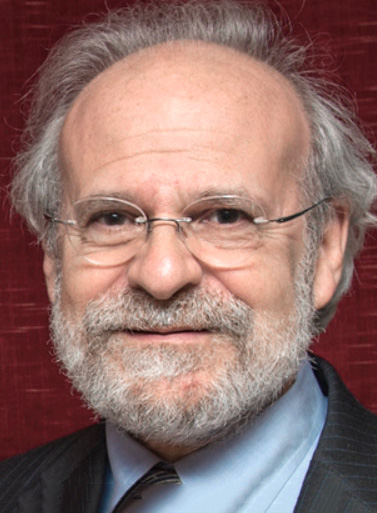

 Last month's column looked at the exhaustion of the IPv4 unallocated address pool and the state of preparedness in the Internet to grapple with this issue... There has been a considerable volume of discussion in various IPv6 and address policy forums across the world about how we should respond to this situation in terms of development of address distribution policies. Is it possible to devise address management policies that might both lessen some of the more harmful potential impacts of this forthcoming hiatus in IPv4 address supply, and also provide some impetus to industry to move in the originally intended direction to transition into an IPv6 network?
Last month's column looked at the exhaustion of the IPv4 unallocated address pool and the state of preparedness in the Internet to grapple with this issue... There has been a considerable volume of discussion in various IPv6 and address policy forums across the world about how we should respond to this situation in terms of development of address distribution policies. Is it possible to devise address management policies that might both lessen some of the more harmful potential impacts of this forthcoming hiatus in IPv4 address supply, and also provide some impetus to industry to move in the originally intended direction to transition into an IPv6 network?
 My friend Kurtis writes in his blog some points he has been thinking of while discussing "when we run out of IPv4 addresses". In reality, as he points out so well, we will not run out. It will be harder to get addresses. It is also the case that unfortunately people that push for IPv6 claim IPv6 will solve all different kinds of problem. Possibly also the starvation problems in the world...
My friend Kurtis writes in his blog some points he has been thinking of while discussing "when we run out of IPv4 addresses". In reality, as he points out so well, we will not run out. It will be harder to get addresses. It is also the case that unfortunately people that push for IPv6 claim IPv6 will solve all different kinds of problem. Possibly also the starvation problems in the world...
 Funny how some topics seem sit on a quiet back burner for years, and then all of a sudden become matters of relatively intense attention. Over the past few weeks we've seen a number of pronouncements on the imminent exhaustion of the IP version 4 address pools. Not only have some of the Regional Internet Registries (RIRs) and some national registry bodies made public statements on the topic, we've now seen ICANN also make its pronouncement on this topic... Why the sudden uptake of interest in this topic? I suspect that a small part of this may be my fault!
Funny how some topics seem sit on a quiet back burner for years, and then all of a sudden become matters of relatively intense attention. Over the past few weeks we've seen a number of pronouncements on the imminent exhaustion of the IP version 4 address pools. Not only have some of the Regional Internet Registries (RIRs) and some national registry bodies made public statements on the topic, we've now seen ICANN also make its pronouncement on this topic... Why the sudden uptake of interest in this topic? I suspect that a small part of this may be my fault!
 The term "last mile" highlights the fact that we are the consumers at the end of a broadband "pipe". Saying "first mile" is a little better but the Internet is not a pipe to or from somewhere else. It's about what we can do locally and then what we can do when we interconnect with other neighborhoods. It's better to describe our neighborhood as the first square mile. Telecom is about selling us services; the Internet is about what we can do ourselves locally and then interconnecting with others everywhere. In writing the First Square Mile - Our Neighborhood essay which I just posted I came to better understand the fundamental difference between the world of telecom which is about giving you choices and the Internet which provides opportunity to discover what we can't anticipate...
The term "last mile" highlights the fact that we are the consumers at the end of a broadband "pipe". Saying "first mile" is a little better but the Internet is not a pipe to or from somewhere else. It's about what we can do locally and then what we can do when we interconnect with other neighborhoods. It's better to describe our neighborhood as the first square mile. Telecom is about selling us services; the Internet is about what we can do ourselves locally and then interconnecting with others everywhere. In writing the First Square Mile - Our Neighborhood essay which I just posted I came to better understand the fundamental difference between the world of telecom which is about giving you choices and the Internet which provides opportunity to discover what we can't anticipate...
 A friend who read my Creating Sustainable Network Neutrality paper wrote to say, "Help me understand what is so bad about treating different types of communications differently." That's a really good question! If you want to offer vertically integrated services on special purpose networks, such as video entertainment or pager service or telephony, I do not have a problem with that, provided you don't use your market power to impede Internet applications that offer competing services...
A friend who read my Creating Sustainable Network Neutrality paper wrote to say, "Help me understand what is so bad about treating different types of communications differently." That's a really good question! If you want to offer vertically integrated services on special purpose networks, such as video entertainment or pager service or telephony, I do not have a problem with that, provided you don't use your market power to impede Internet applications that offer competing services...
 Fergie replied on NANOG to my recent post on the subject of broadband routers insecurity: "I'll even go a step further, and say that if ISPs keep punting on the whole botnet issue, and continue to think of themselves as 'common carriers' in some sense -- and continue to disengage on the issue -- then you may eventually forced to address those issues at some point in the not-so-distant future..." He is right, but I have a comment I felt it was important - to me - to make. Not just on this particular vulnerability, but on the "war"...
Fergie replied on NANOG to my recent post on the subject of broadband routers insecurity: "I'll even go a step further, and say that if ISPs keep punting on the whole botnet issue, and continue to think of themselves as 'common carriers' in some sense -- and continue to disengage on the issue -- then you may eventually forced to address those issues at some point in the not-so-distant future..." He is right, but I have a comment I felt it was important - to me - to make. Not just on this particular vulnerability, but on the "war"...
 In this post I'd like to discuss the threat widely circulated insecure broadband routers pose today. We have touched on it before. Today, yet another public report of a vulnerable DSL modem type was posted to bugtraq, this time about a potential WIRELESS flaw with broadband routers being insecure at Deutsche Telekom. I haven't verified this one myself but it refers to "Deutsche Telekom Speedport w700v broadband router"...
In this post I'd like to discuss the threat widely circulated insecure broadband routers pose today. We have touched on it before. Today, yet another public report of a vulnerable DSL modem type was posted to bugtraq, this time about a potential WIRELESS flaw with broadband routers being insecure at Deutsche Telekom. I haven't verified this one myself but it refers to "Deutsche Telekom Speedport w700v broadband router"...
 We touched on this subject in the past, but recently Rich Kulawiek wrote a very interesting email to NANOG to which I replied, and decided to share my answer here as well: I stopped really counting bots a while back. I insisted, along with many friends, that counting botnets was what matters. When we reached thousands we gave that up. We often quoted anti-nuclear weapons proliferation sentiments from the Cold War, such as: "why be able to destroy the world a thousand times over if once is more than enough?" we often also changed it to say "3 times" as redundancy could be important...
We touched on this subject in the past, but recently Rich Kulawiek wrote a very interesting email to NANOG to which I replied, and decided to share my answer here as well: I stopped really counting bots a while back. I insisted, along with many friends, that counting botnets was what matters. When we reached thousands we gave that up. We often quoted anti-nuclear weapons proliferation sentiments from the Cold War, such as: "why be able to destroy the world a thousand times over if once is more than enough?" we often also changed it to say "3 times" as redundancy could be important...
 What economic and social factors are shaping our future needs and expectations for communications systems? This question was the theme of a joint National Science Foundation (NSF) and Organisation for Economic Co Operation and Development (OECD) workshop, held on the 31st January of this year. The approach taken for this workshop was to assemble a group of technologists, economists, industry, regulatory and political actors and ask each of them to consider a small set of specific questions related to a future Internet. Thankfully, this exercise was not just another search for the next "Killer App", nor a design exercise for IP version 7. It was a valuable opportunity to pause and reflect on some of the sins of omission in today's Internet and ask why, and reflect on some of the unintended consequences of the Internet and ask if they were truly unavoidable consequences...
What economic and social factors are shaping our future needs and expectations for communications systems? This question was the theme of a joint National Science Foundation (NSF) and Organisation for Economic Co Operation and Development (OECD) workshop, held on the 31st January of this year. The approach taken for this workshop was to assemble a group of technologists, economists, industry, regulatory and political actors and ask each of them to consider a small set of specific questions related to a future Internet. Thankfully, this exercise was not just another search for the next "Killer App", nor a design exercise for IP version 7. It was a valuable opportunity to pause and reflect on some of the sins of omission in today's Internet and ask why, and reflect on some of the unintended consequences of the Internet and ask if they were truly unavoidable consequences...
 One of the more persistent founding myths around the internet is that it was designed to be able to withstand a nuclear war, built by the US military to ensure that even after the bombs had fallen there would still be communications between surviving military bases. It isn't true, of course. The early days of the ARPANET, the research network that predated today's internet, were dominated by the desire of computer scientists to find ways to share time on expensive mainframe computers rather than visions of Armageddon. Yet the story survives...
One of the more persistent founding myths around the internet is that it was designed to be able to withstand a nuclear war, built by the US military to ensure that even after the bombs had fallen there would still be communications between surviving military bases. It isn't true, of course. The early days of the ARPANET, the research network that predated today's internet, were dominated by the desire of computer scientists to find ways to share time on expensive mainframe computers rather than visions of Armageddon. Yet the story survives...